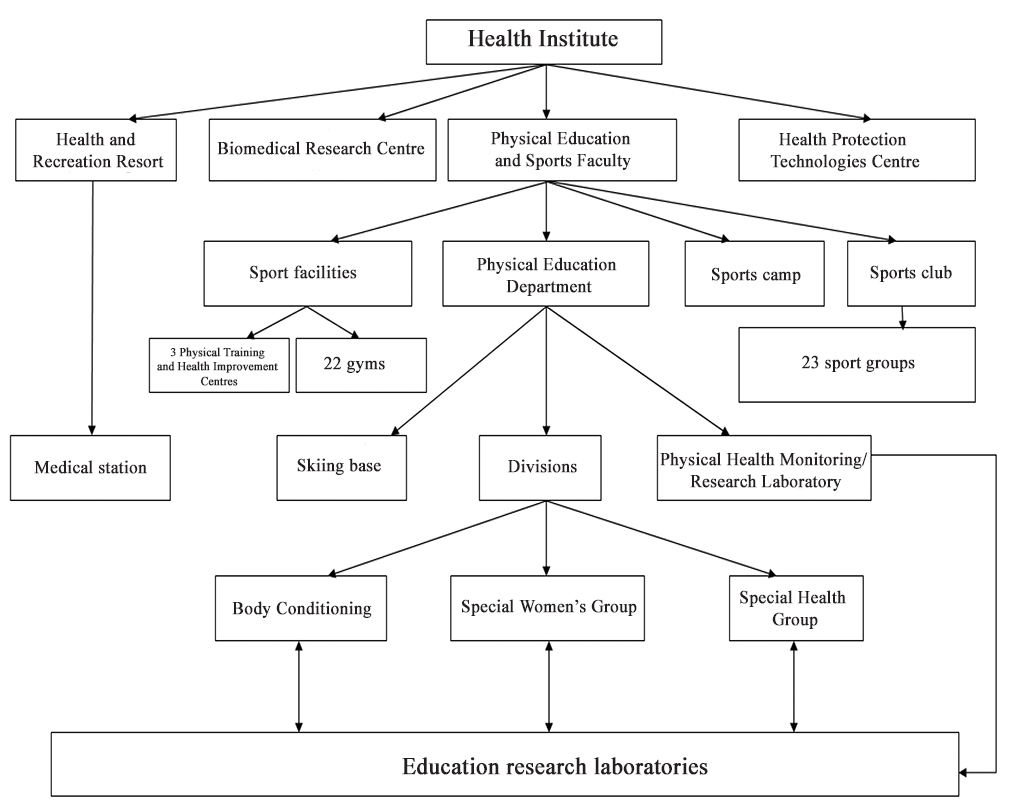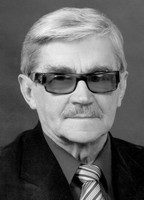Physical education improvement prospects for non-sport university students
Фотографии:
ˑ:
Theory and Practice of Physical Culture № 12 2016
Professor, Dr.Med. V.Y. Lebedinsky1
Professor, Dr.Med. M.M. Kolokol'tsev1
1Irkutsk National Research Technical University, Irkutsk
Keywords: university students, physical culture, innovation technologies.
Background. Efficiency of the health improvement technologies designed for university applications are determined based on the students’ health rating criteria. The modern health deterioration trend reported for the young generation of the nation has raised increased concerns in the research community for the last few years. Many researchers and analysts in this context consider the physical education system a key contributor to the health rehabilitation and improvement initiatives [1, 2, 3].
Some authors [2, 3] come up with sport promotion ideas; the others offer a variety of health rating and progress control systems; or special education models; ethnic educational technologies; adaptive educational environments; and other projects. However, researchers still give a high priority to the issues of improvement of the students’ physical education system based on the relevant innovative technologies being implemented under the academic Physical Education curriculum.
Objective of the study was to provide a basis for innovative physical education and health improvement technologies to reform the education and development process at the INRTU Physical Education Department.
Study results and discussion. The medical examination reports rating health of Irkutsk National Research Technical University (INRTU) students for the last 12 years (the health rates have been used to qualify the students for special health groups subject to customized physical education curricula) report the proportion of the first-year students diagnosed with expressed health disorders at 21% in 2004-2006; 32% in 2009-2010; and 41% in 2016.
In view of the above negative trend, we have taken and offer the following initiatives:
1. Establish a Health Institute (HI) at the INRTU, with every INRTU division engaged in the students’ physical health research and improvement process being incorporated in the HI structure and activity, including the Biomedical Research Centre; Health Improvement Technologies Centre; Sports Camp; Preventive Clinic; Sports Club; Physical Training and Health Improvement Clubs; university gyms, etc. The proposed innovative system (see Figure 1) designed for integrated health research and students’ health improvement activities may be ranked as unique and unparalleled in the national higher education system of Russia. The theoretical, practical and methodological research and development works at the Physical Education Department and the research potential of the academic staff give the means to successfully implement this project. For the last 8 years, among other things, the Department staff members have published 21 monographs and many articles in the research editions recommended for publications by the National Attestation Commission.

Figure 1. Organisational chart of the Health Institute under Irkutsk National Research Technical University (INRTU)
|
|
Health Institute |
|
|
|
Health and Recreation Resort |
Biomedical Research Centre |
Physical Education and Sports Faculty |
Health Protection Technologies Centre |
|
Sport facilities |
Physical Education Department |
Sports camp |
Sports club |
|
3 Physical Training and Health Improvement Centres |
22 gyms |
|
23 sport groups |
|
Medical station |
Skiing base |
Divisions |
Physical Health Monitoring/ Research Laboratory |
|
Body Conditioning |
Special Women’s Group |
|
Special Health Group |
|
|
Education research laboratories |
|
|
2. In December 2011, a Physical Health Monitoring/ Research Laboratory was established under the Physical Education Department and equipped with modern research instruments applicable not only for the research works by the Department staff and postgraduates but also by the students engaged in the relevant research projects and other students under the Physical Education curriculum of the full-time and evening academic education courses. The available assets and academic staff make it possible to establish 3 education research laboratories under the Physical Education and Sports Faculty.
3. Pursuant to the “Russian Youth” Federal Education Program (2002−2005) and the Children, Adolescents and Youth Physical Education and Health Improvement Sub-program of the Russian Federation (2002−2005), the INRTU Physical Education Department has run the students’ physical development and fitness monitoring project since 2008 with the relevant medical examinations prior to and after each academic year (twice a year) to give the means for due individualization of the educational process. The health monitoring data in the context of the academic Physical Education curriculum give the means to: rate the initial physical and motor conditions and qualities of students; make adjustments to the education and training process; rate students’ progress in mastering the relevant motor skills; make comparative analysis of the health standards across different students’ groups, courses, faculties and universities; profile students’ health specifics and variations across the academic health groups; assess the effects of different sports and training practices on physical development and fitness rates; and rate the performance of teachers of Physical Education. To ensure the students’ physical development and fitness being rated on a more efficient basis, more comprehensive monitoring of their health conditions is recommended, and the relevant research to support the initiative is being performed by the INRTU Physical Education Department staff and the INRTU students and post-graduates.
4. For the purposes of the students’ physical education process being further individualized on a more efficient basis, we recommend to develop and implement the relevant equipment to read the key bodily performance data (heart rates, respiratory rate, body temperature etc.) and register, on a timely basis, individual responses of the trainees to physical loads. The equipment will provide the necessary feedback to control the training process efficiency and improve its individualization standards. With this purpose in mind, the INRTU Physical Education Department procured (back in 2012) the POLAR TEAM2 PRO health control system equipped with a set of cardio-monitoring units. However, the system generates only the heart rates related data that are insufficient for the physical education process being individualized on a comprehensive basis. Therefore, new technical tools need to be developed and applied to control students’ responses to training loads on an integrated basis and have all necessary data for the physical education process being duly individualized.
5. Further efforts need to be taken for the sports promotion under the academic Physical Education curriculum (by special boxing, skiing, powerlifting, fitness and other groups), with a sports excellence division being established under the Department to provide extra motivations for the students’ physical culture and healthy lifestyles.
6. To support further development process of the Physical Education and Sports Faculty, we recommend establishing a masters’ course in Physical Education. The Physical Education Department has accumulated the necessary assets and established conditions (including the academic staff, material and technical assets, and the theoretical and practical provisions) for the initiative.
Conclusion. Irkutsk National Research Technical University reports the students’ population diagnosed with expressed health disorders being on the rise, with the actual growth of around two times for the last 12-15 years. This negative trend will be countered by a variety of innovation physical education and health improvement technologies designed to step up the students’ health standards. In this context, we recommend to have established a Health Institute (HI) under INRTU to consolidate the efforts of the INRTU divisions engaged in the students’ physical health research and improvement studies. In addition, we recommend establishing the relevant education research laboratories and a masters’ course in Physical Education.
References
- Vilenskiy M.Y. Fizicheskaya kul'tura v gumanitarnom obrazovatel'nom prostranstve vuza (Physical Education in university humanitarian educational space) / M.Y. Vilenskiy // Fizicheskaya kultura: vospitanie, obrazovanie, trenirovka, 1996. – #1.
- Bal'sevich V.K. Kontseptsiya al'ternativnykh form organizatsii fizicheskogo vospitaniya detey i molodezhi (The concept of alternative forms of physical education process for children and youth) / V.K. Bal'sevich, L.I. Lubysheva // Fizicheskaya kultura: vospitanie, obrazovanie, trenirovka. 1996. # 1. P. 23.
- Shporin E.G. Innovatsionnye tekhnologii v deyatel'nosti kafedry fizicheskoy kul'tury tekhnicheskogo vuza sibirskogo regiona (Innovative technologies at Physical Education Department of technical college in Siberian region) / E.G. Shporin, V.Y. Lebedinskiy, M.M. Kolokol'tsev // Vestnik Irkutskogo gosudarstvennogo tekhnicheskogo universiteta (Bulletin of Irkutsk State Technical University). 2011. № 8 (55). P. 332-337.
Corresponding author: lebedinskiy@istu.edu
Abstract
Medical examinations of Irkutsk National Research Technical University (INRTU) students for the last 12 years that covered more than 20 thousand students have reported the numbers of the students diagnosed with a variety of health disorders and qualified for this reason with Groups 3 and 4 subject to special Physical Education curriculum being on the rise. This fact requires the educational, practical and research activity of the INRTU Physical Education Department being seriously improved and efforts of every INRTU division with concern to the students’ physical health research and improvement activity being consolidated. Objective of this study was to provide a basis for innovative physical education and health improvement technologies to reform the education and development process at the INRTU Physical Education Department. A Health Institute (HI) is proposed to be established at INRTU, with every INRTU division engaged in the students’ physical health research and improvement process being incorporated in the HI structure and activity. In addition, special education research laboratories and a masters’ course in Physical Education are proposed to be established.



